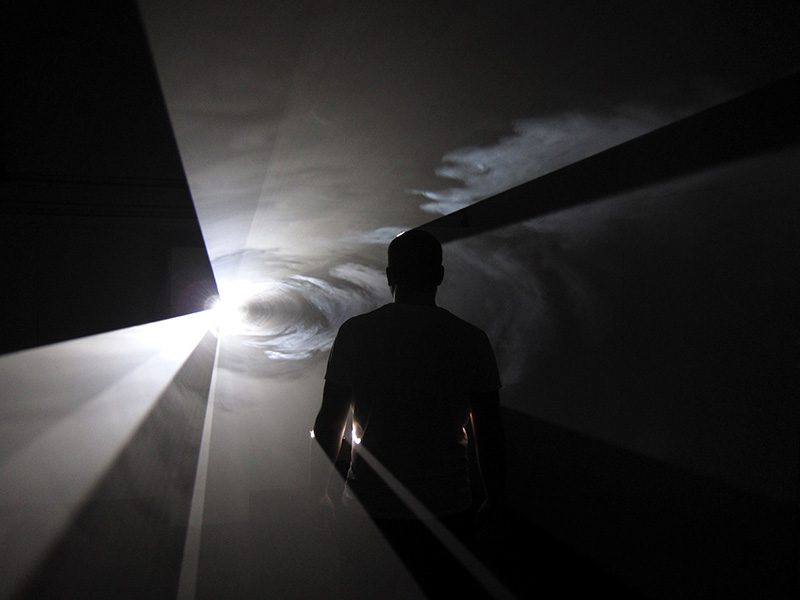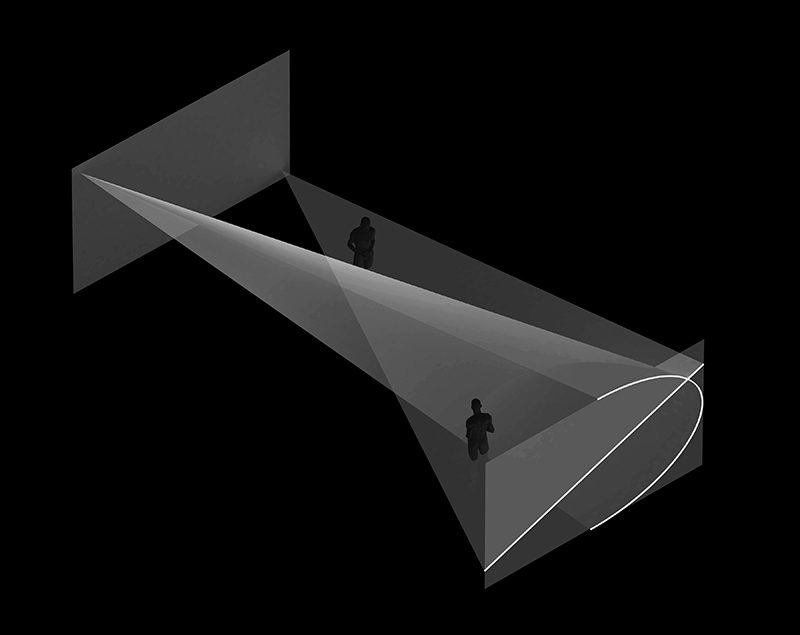ART-PRESENTATION: Anthony McCall-Swell
 Anthony McCall earliest films are documents of outdoor performances that were notable for their minimal use of the elements, most notably fire. After moving to New York in 1973, McCall continued his fire performances and developed his ‘solid light’ film series, beginning with “Line Describing a Cone” (1973), in which a volumetric form composed of projected light slowly evolves in three-dimensional space.
Anthony McCall earliest films are documents of outdoor performances that were notable for their minimal use of the elements, most notably fire. After moving to New York in 1973, McCall continued his fire performances and developed his ‘solid light’ film series, beginning with “Line Describing a Cone” (1973), in which a volumetric form composed of projected light slowly evolves in three-dimensional space.
By Dimitris Lempesis
Photo: Nevada Museum of Art archive
Commissioned by the Nevada Museum of Art, Anthony McCall has created a new immersive light installation. Occupying a space between sculpture, cinema and drawing, “Swell” will become part of the Museum’s Contemporary Art Collection. McCall began making experimental films in 1971 while living in London. “Line Describing a Cone” was McCall’s first ‘solid light film’, and was produced in August 1973 shortly after he moved to New York, where the worlds of art and experimental film were much more interconnected than they were in Britain at the same time. “Line Describing a Cone” is made from a beam of white light emitted from a film projector positioned at one end of a darkened room. Passing through the projector is an animated film of a thin, arcing line that, frame by frame, gradually joins up to become a complete circle. Over the course of 30 minutes this line of light traces the circumference of the circle as a projection on the far wall while the beam takes the form of a three-dimensional hollow cone. Mist from smoke machines gives the beam of light a greater density, making it appear almost tangible. By encouraging viewers to move around and in front of the projection, McCall allows for the line of light to be sliced momentarily by a passing body or limb. The fact that viewers can interact with the work challenges the passive, motionless viewing experience of conventional cinema, while the contingency of movement in the gallery space contrasts with the pre-determined geometry of the line of light. As a result, the emerging cone can be seen as either convex or concave depending not only on where the viewers stand but also on when they enter the space and on how long they spend there.
Info: Nevada Museum of Art, 160 West Liberty Street. Reno, Duration: 29/7/16-8/1/16, Days & Hours: Wed & Fri-Sun 10:00-18:00, Thu 10:00-20:00, www.nevadaart.org

